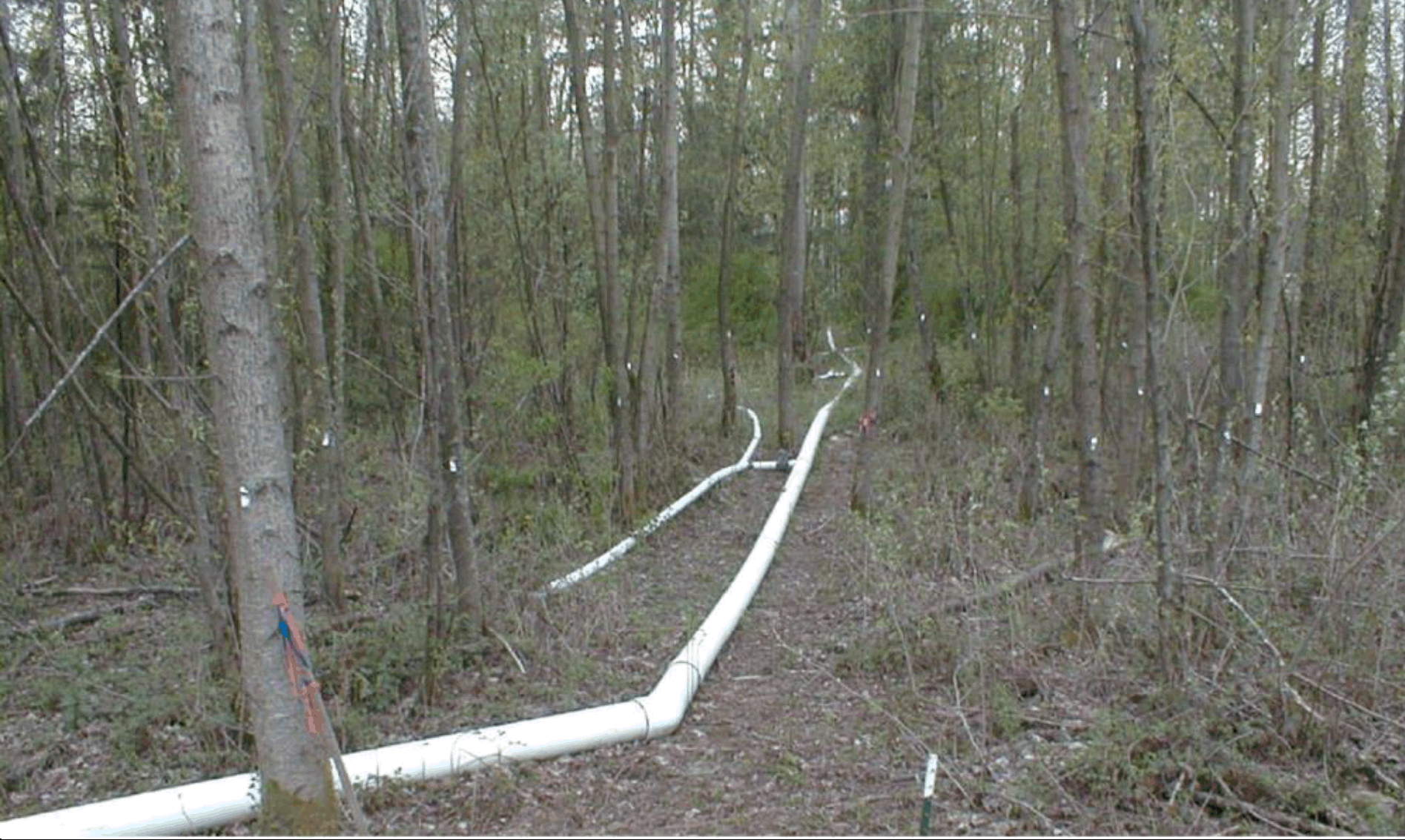1.41 BMP C236 - Vegetative Filtration
Vegetative filtration as a BMP is used in conjunction with detention storage in the form of portable tanks or BMP C241 - Temporary Sediment Pond, BMP C206 - Level Spreader, and a pumping system with surface intake. Vegetative filtration improves turbidity levels of stormwater discharges by filtering runoff through existing vegetation where undisturbed forest floor duff layer or established lawn with thatch layer are present. Vegetative filtration can also be used to infiltrate dewatering waste from foundations, vaults, and trenches as long as runoff does not occur.
For every five acre of disturbed soil use one acre of grass field, farm pasture, or wooded area. Reduce or increase this area depending on project size, groundwater table height, and other site conditions.
Wetlands shall not be used for filtration.
Do not use this BMP in areas with a high groundwater table, or in areas that will have a high seasonal groundwater table during the use of this BMP.
This BMP may be less effective on soils that prevent the infiltration of the water, such as hard till.
Using other effective source control measures throughout a construction site will prevent the generation of additional highly turbid water and may reduce the time period or area need for this BMP.
Stop distributing water into the vegetated area if standing water or erosion results.
On large projects that phase the clearing of the site, areas retained with native vegetation may be used as a temporary vegetative filtration area.
Find land adjacent to the project that has a vegetated field, preferably a farm field, or wooded area.
If the project site does not contain enough vegetated field area consider obtaining permission from adjacent landowners (especially for farm fields).
Install a pump and downstream distribution manifold depending on the project size. Generally, the main distribution line should reach 100 to 200-feet long ( large projects, or projects on tight soil, will require systems that reach several thousand feet long with numerous branch lines off of the main distribution line).
The manifold should have several valves, allowing for control over the distribution area in the field.
Install several branches of 4-inch diameter schedule 20 polyvinyl chloride (PVC) pipe, or 6-inch fire hose, which can convey the turbid water out to various sections of the field. See Figure 3 - 26: Manifold and Branches in a Wooded, Vegetated Spray Field.
Determine the branch length based on the field area geography and number of branches. Typically, branches stretch from 200-feet to several thousand feet. Lay branches on contour with the slope.
On uneven ground, sprinklers perform well. Space sprinkler heads so that spray patterns do not overlap.
On relatively even surfaces, a level spreader using 4-inch perforated pipe may be used as an alternative option to the sprinkler head setup. Install pipe at the highest point on the field and at various lower elevations to ensure full coverage of the filtration area. Place the pipe with the holes up to allow for a gentle weeping evenly out all holes. Leveling the pipe by staking and using sandbags may be required.
To prevent over saturating of the vegetative filtration area, rotate the use of branches or spray heads. Repeat as needed based on monitoring the spray field
.
Monitor the spray field on a daily basis to ensure that over saturation of any portion of the field doesn’t occur at any time. The presence of standing puddles of water or creation of concentrated flows visually signify that over saturation of the field has occurred.
Monitor the vegetated spray field all the way down to the nearest surface water, or farthest spray area, to ensure that the water has not caused overland or concentrated flows, and has not created erosion around the spray nozzle(s).
Do not exceed water quality standards for turbidity.
It is recommended that a separate inspection log be developed, maintained and kept with the existing site logbook to aid the operator conducting inspections. This separate “Field Filtration Logbook” can also aid in demonstrating compliance with permit conditions.
Inspect the spray nozzles daily, at a minimum, for leaks and plugging from sediment particles.
If erosion, concentrated flows, or over saturation of the field occurs, rotate the use of branches or spray heads or move the branches to a new field location.
Check all branches and the manifold for unintended leaks.
Figure 3 - 26: Manifold and Branches in a Wooded, Vegetated Spray Field
